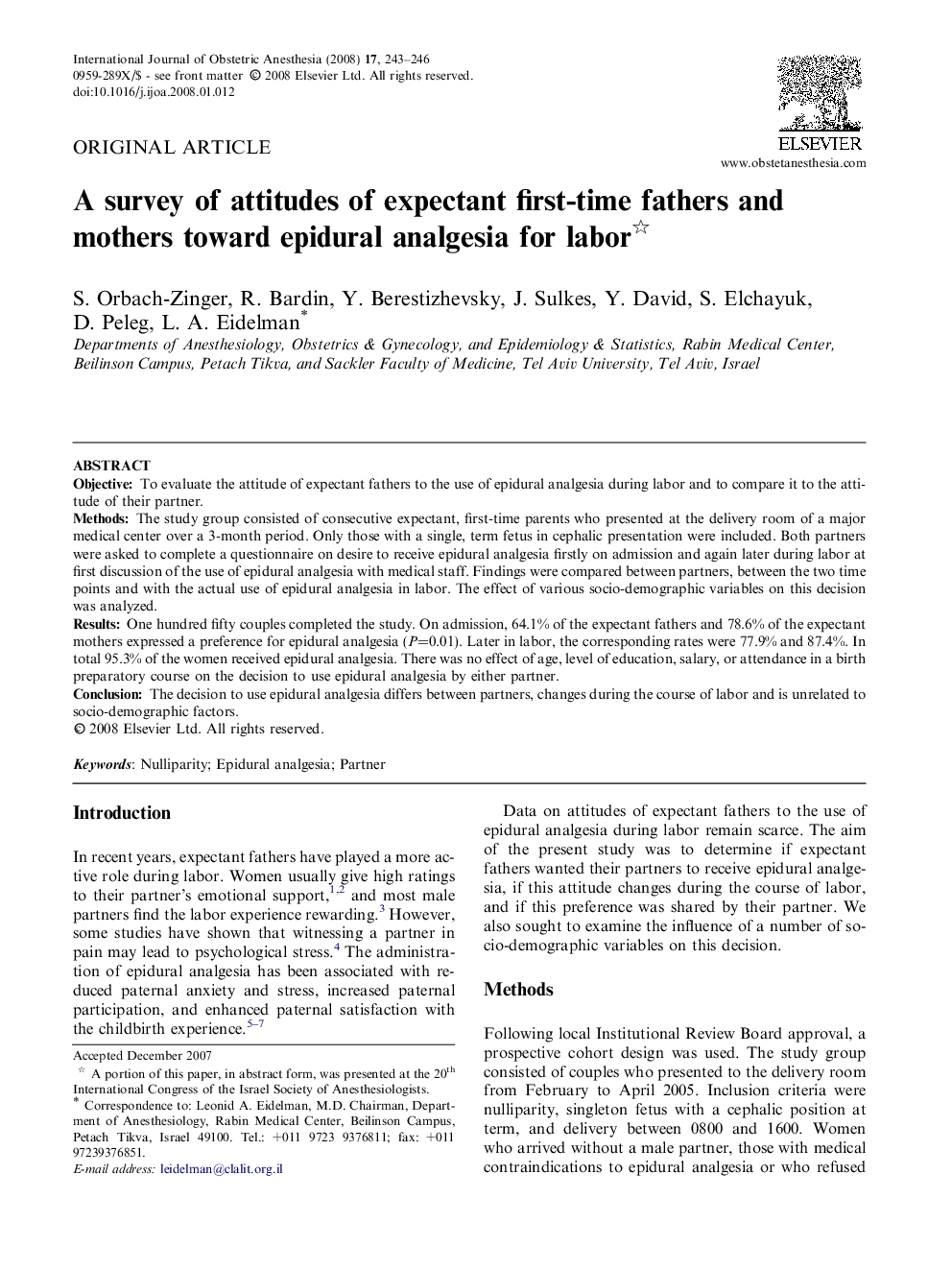| Article ID | Journal | Published Year | Pages | File Type |
|---|---|---|---|---|
| 2758466 | International Journal of Obstetric Anesthesia | 2008 | 4 Pages |
ObjectiveTo evaluate the attitude of expectant fathers to the use of epidural analgesia during labor and to compare it to the attitude of their partner.MethodsThe study group consisted of consecutive expectant, first-time parents who presented at the delivery room of a major medical center over a 3-month period. Only those with a single, term fetus in cephalic presentation were included. Both partners were asked to complete a questionnaire on desire to receive epidural analgesia firstly on admission and again later during labor at first discussion of the use of epidural analgesia with medical staff. Findings were compared between partners, between the two time points and with the actual use of epidural analgesia in labor. The effect of various socio-demographic variables on this decision was analyzed.ResultsOne hundred fifty couples completed the study. On admission, 64.1% of the expectant fathers and 78.6% of the expectant mothers expressed a preference for epidural analgesia (P=0.01). Later in labor, the corresponding rates were 77.9% and 87.4%. In total 95.3% of the women received epidural analgesia. There was no effect of age, level of education, salary, or attendance in a birth preparatory course on the decision to use epidural analgesia by either partner.ConclusionThe decision to use epidural analgesia differs between partners, changes during the course of labor and is unrelated to socio-demographic factors.
